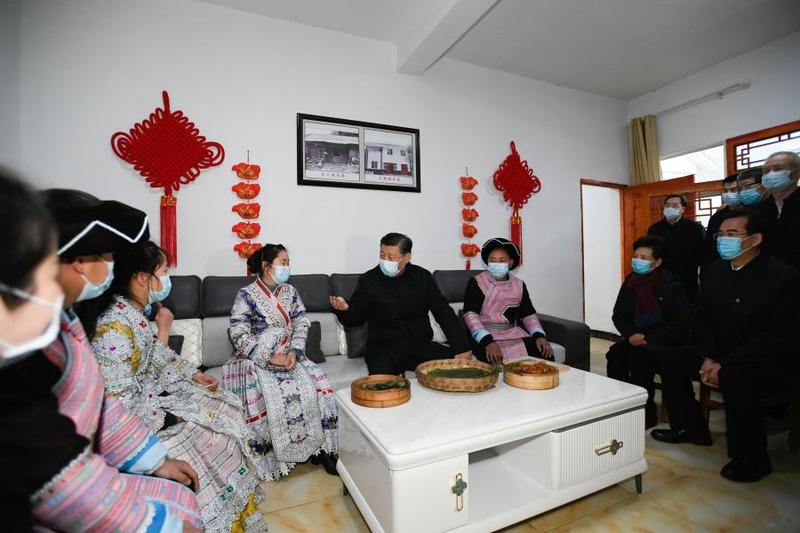


A leader's footprints always reveal his vision and agenda. Clear messages have been sent as Chinese President Xi Jinping has once again joined ordinary people just days ahead of the Spring Festival, or the Chinese Lunar New Year, bringing warm greetings and best wishes for them.

From Wednesday to Friday, Xi inspected Guizhou, a southwestern province inhabited by many ethnic minorities and once home to the country's largest poor population, also the last to eradicate extreme privation nationwide.
For nine years in a row, Xi has made it a tradition to visit ordinary people, especially the disadvantaged groups, ahead of the Spring Festival, the most important holiday in China.
Since becoming the leader of the Communist Party of China (CPC) in 2012, Xi has made poverty alleviation a top priority in his more than 80 domestic inspection tours. His people-centered philosophy and focus on the poorest members of society is a common thread throughout his political career from grassroots positions right up to the top job.
The crucial year of 2021 marks the beginning of China's marching toward modernization from a new historical starting point. Xi's special concerns during his Guizhou tour this year speak volumes as he has charted a path to seize new opportunities amid challenges China faces in the new stage of development.
The general secretary of the CPC Central Committee came for a first-hand inspection of the results of the eight-year battle against poverty he and the Party led. Xi made a house call on local villagers in an ethnic Miao township, visited a Miao embroidery workshop and talked to people who were participating in festive activities. He also inspected the ecological environment of the Wujiang River.
Consolidating the foundation for agriculture, rural areas and work related to farmers is "the ballast" for the country to tackle the changing situations and open up new prospects. Building on a major victory in poverty alleviation, China is shifting its focus of rural work to all-round rural vitalization, the most effective means to secure the achievements of poverty alleviation yet another protracted war that is more challenging and will last longer.
With China at a historical juncture of marching toward its second centenary goal, Xi chose Guizhou for a reason. The once deprived province with poor initial endowment has become a model of high-quality development by fully tapping its late-mover advantage and an implementor of the country's new development philosophy, with its economic growth rate remaining in the front of the ranks across the country over the past decade thanks to innovation-driven and green development.
Innovation, as the primary driving force for development, determines the speed, effectiveness and sustainability of development. China has put innovation first in its new development concepts as well as the 14th Five-Year Plan, sending a clear message that the world's second-largest economy attaches unprecedented importance to target its Achilles' heel -- an inadequate capacity for innovation -- as Xi once noted.
"Green" is also of fundamental significance in high-quality development and one of the major tasks in the latest five-year plan. There is no substitute for the ecological environment, without which one can hardly live.
China has made a strategic choice to forge a new development paradigm with domestic circulation as the mainstay and domestic and international circulations reinforcing each other. Its super-large market and massive domestic consumption potential have emerged as new comparative advantages that make the Chinese economy resilient to external uncertainties.
Safe and stable industrial and supply chains hold a fundamental position in the new paradigm, and efforts should be taken to make them more independent and controllable. China's complete industrial system and sound industrial and supply chains have made it capable of contributing to the global anti-pandemic fight.
Making mid- and long-term plans to guide socio-economic development has been an important process of the CPC's governance of China since the 1950s. The Party has united the Chinese people of all ethnic groups and led them to unprecedented miracles of rapid economic development and long-term social stability.
Despite various challenges, the country is still in an important period of strategic opportunity for development with opportunities by and large outweighing challenges. For China, the best way to forestall and defuse various kinds of risks and proactively address challenges brought by external changes is to focus on taking care of its own matters and improving the quality of development.
